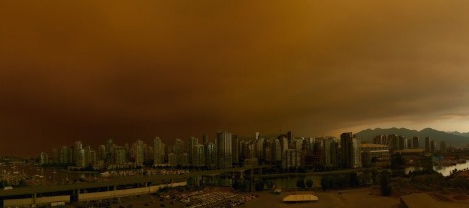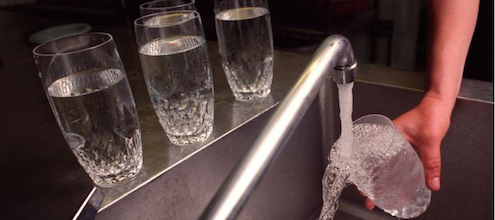
Water Policy: Hot and Thirsty in British Columbia

British Columbia is parched and veiled in a haze of smoke and ash. Records for the number and size of wild fires, low water reservoir levels, and extreme temperatures have been smashed in recent weeks. The month of June is now predicted to be the hottest on record. Metro Vancouver, home to over half of the provincial population, is at the lowest reservoir levels since 1987, and it’s only the beginning of July.
Water Policy for a Drier Future – Is BC Prepared?
As a result, Vancouver Island is at a Stage 4 drought level, while the rest of the Southwest coast is either at Stage 2 or 3. This means that Islanders are barred from angling to protect vulnerable fish populations, and regional water managers can temporarily suspend water licenses if necessary. Other voluntary measures and restrictions are in place throughout the province for lawn watering and recreational use. While scientists are cautious to attribute this to climate change, the current aridness is consistent with climate projections that B.C. will get warmer and drier.
The drought-like conditions in B.C. highlight several lessons for what could be the new norm. Indeed, alarm bells were rung back in April in the Vancouver Sun about how the ongoing 4-year drought in California should be a wake-up call for water scarcity on Canada’s west coast. But is existing water policy in B.C. prepared for a drier future?
How Much Should You Pay for 111 Million Litres of Water?
The B.C. government recently passed the Water Sustainability Act (WSA) to replace the antiquated Water Act. The new legislation, coming into force in 2016, effectively doubles the price of water for all consumers; however, the maximum rate for big users is a flat rate of $2.25 per million litres. This is the lowest price for blue gold in the country, and among the lowest in the world. Nestlé, for example, is expected to pay less than $600 for withdrawing an estimated 265 million litres—enough water to fill 106 Olympic-sized swimming pools.
This isn’t about faulting individual companies; rather, it’s about pointing out the mismatch in price signals. At such low prices, water is essentially free with no incentive for conservation or efficiency. The ongoing water restrictions in B.C. provide an example of the perverse effects of low prices: the penalty for watering your lawn is $250, yet the same amount could buy 111 million litres of water under the WSA rate structure.
Take a Tip From Tofino – Smart Water Pricing Works
The Ecofiscal Commission recently commented on California’s challenges with drought, and views smart water-pricing as an important solution. A water pricing strategy that properly reflects the infrastructure and environmental costs of water-use is a critical tool that can ensure efficient management of our critical water resources, especially when considering increasing demand. The link between higher water prices and reduced consumption is clear, yet B.C. and the rest of Canada lag far behind.
Smart pricing provides the flexibility and reach required to deal with the uncertainties of climate change, and reduces the risk of reactionary policies to cope with water shortages. Instead of a low and flat rate structure, prices can increase with the volume used, by season, or by supply levels to reflect the value of clean and plentiful water reservoirs. It can also be designed to guarantee a basic and affordable amount of clean water for all residents. The small community of Tofino, B.C., has implemented such a pricing strategy, increasing the price during the summer months to cope with the influx of tourists and lower water supplies.
Water scarcity in BC should resonate across Canada. On a per-capita basis, Canadians have one the highest rates of water usage in the world. As some areas of Canada become hotter and drier, and more vulnerable to swings in water supply levels, the efficient use of scarce water is paramount to the future prosperity and sustainability of our communities.




Comments are closed.